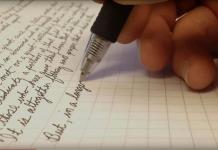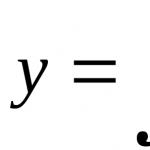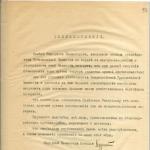Characteristics
Unicode
HTML code
… or …
URL code
| Ellipsis | |||||||||||||||||||||||||||||||||||||||||||||||||||||||||||||||||||||||||||||||||||||
|---|---|---|---|---|---|---|---|---|---|---|---|---|---|---|---|---|---|---|---|---|---|---|---|---|---|---|---|---|---|---|---|---|---|---|---|---|---|---|---|---|---|---|---|---|---|---|---|---|---|---|---|---|---|---|---|---|---|---|---|---|---|---|---|---|---|---|---|---|---|---|---|---|---|---|---|---|---|---|---|---|---|---|---|---|---|
|
|||||||||||||||||||||||||||||||||||||||||||||||||||||||||||||||||||||||||||||||||||||
|
|||||||||||||||||||||||||||||||||||||||||||||||||||||||||||||||||||||||||||||||||||||
Ellipsis (… ) - a punctuation mark in the form of several (in Russian three) dots placed side by side. Serves to indicate the intermittent nature of speech, the incompleteness of a statement or an omission in the text.
Russian language
In the Russian language, ellipsis as one of the punctuation marks was first indicated in the grammar of A. Kh. Vostokov in 1831. Then it was called a “preventive sign.”
Currently, in the Russian language, ellipses are used in the following cases:
Sometimes ellipses are used with question marks or exclamation marks. In these cases, only two dots are placed after the sign: “!..” and “?...”. Examples:
- What is there to offer?.. And then they write, write... Congress, some Germans... My head is swelling. Take everything and divide it... (M. Bulgakov “Heart of a Dog”).
- It's getting light!.. Ah! how quickly the night has passed! (A. S. Griboyedov “Woe from Wit”).
Ellipsis in other languages
Ellipsis exists in other languages, but the rules for its use vary from language to language.
In English (as in Russian), an ellipsis has three dots, but in Chinese it consists of 6 dots (2 groups of 3 dots).
In Unicode, the ellipsis (horizontal ellipsis) has the code U+2026, in HTML the ellipsis corresponds to the name .... In Windows OS it is entered using the key combination Alt+0133.
Mathematics
In mathematics, ellipsis is used to mean “and so on” and, in particular, means:
Use in computer science
In some programming languages (C/C++, etc.), ellipses are used to indicate an arbitrary number of unknown arguments in a function description. For example:
int printf(const char * fmt, ...);
means that the printf function has a first argument of type const char * , and then there can be any number of arguments with arbitrary types.
In user interfaces, ellipses in menu items and buttons usually indicate that the user will be required to enter additional data (usually in a separate dialog box) before the action associated with that interface element can be performed.
Typography
There is no consensus on how to correctly type an ellipsis (with one character, “...”, or several “...”). Supporters of the first typesetting option cite as an argument the fact that since such a symbol exists, it serves to enrich the text. In addition, this dialing option saves bytes. The second option (which is supported, for example, by Artemy Lebedev) is supported by two features that are unattainable if the points in the ellipsis are continuous:
- Variations in the number of dots in the ellipsis sign from language to language;
- Such syntactic constructions as “!..” and “?..”, which do not have single-character analogues.
see also
Write a review about the article "Ellipsis"
Notes
Excerpt characterizing the Ellipsis
- No, mon pere. [father.]No matter how unsuccessfully M lle Bourienne found herself on the subject of conversation, she did not stop and chatted about greenhouses, about the beauty of a new blossoming flower, and the prince softened after the soup.
After dinner he went to his daughter-in-law. The little princess sat at a small table and chatted with Masha, the maid. She turned pale when she saw her father-in-law.
The little princess has changed a lot. She was more bad than good now. The cheeks sank, the lip rose upward, the eyes were drawn downwards.
“Yes, it’s some kind of heaviness,” she answered when the prince asked what she felt.
- Do you need anything?
- No, merci, mon pere. [Thank you, father.]
- Well, okay, okay.
He went out and walked to the waitress. Alpatych stood in the waiter's room with his head bowed.
– Is the road blocked?
- Zakidana, your Excellency; Forgive me, for God's sake, for one stupid thing.
The prince interrupted him and laughed his unnatural laugh.
- Well, okay, okay.
He extended his hand, which Alpatych kissed, and walked into the office.
In the evening Prince Vasily arrived. He was met at the prespekt (that's the name of the avenue) by coachmen and waiters, who shouted and drove his carts and sleighs to the outbuilding along a road deliberately covered with snow.
Prince Vasily and Anatoly were given separate rooms.
Anatole sat, having taken off his doublet and resting his hands on his hips, in front of the table, at the corner of which he, smiling, fixed his beautiful large eyes intently and absent-mindedly. He looked upon his entire life as a continuous amusement that someone like that for some reason had undertaken to arrange for him. Now he looked at his trip to the evil old man and the rich ugly heiress in the same way. All this could have turned out, he supposed, very well and funny. Why not marry if she is very rich? It never interferes, Anatole thought.
He shaved, perfumed himself with care and panache, which had become his habit, and with his innate good-natured, victorious expression, holding his handsome head high, he entered his father’s room. Two valets were busy around Prince Vasily, dressing him; He himself looked around animatedly and nodded cheerfully to his son as he entered, as if he were saying: “So, that’s exactly what I need you for!”
- No, no joke, father, is she very ugly? A? – he asked, as if continuing a conversation he had had more than once during the trip.
- That's enough. Nonsense! The main thing is to try to be respectful and reasonable with the old prince.
“If he scolds, I’ll leave,” said Anatole. “I can’t stand these old people.” A?
– Remember that everything depends on this for you.
At this time, the arrival of the minister with his son was not only known in the maiden's room, but the appearance of both of them was already described in detail. Princess Marya sat alone in her room and tried in vain to overcome her inner agitation.
“Why did they write, why did Lisa tell me about this? After all, this cannot be! - she said to herself, looking in the mirror. - How do I get out into the living room? Even if I liked him, I couldn’t be on my own with him now.” The thought of her father's gaze terrified her.
The little princess and m lle Bourienne had already received all the necessary information from the maid Masha about what a ruddy, black-browed handsome minister's son was, and about how daddy dragged them with force to the stairs, and he, like an eagle, walking three steps at a time, ran after him. Having received this information, the little princess and M lle Bourienne, still audible from the corridor in their animated voices, entered the princess’s room.
– Ils sont arrives, Marieie, [They arrived, Marie,] do you know? - said the little princess, wobbling her belly and sitting heavily on the chair.
She was no longer in the blouse in which she had sat in the morning, but she was wearing one of her best dresses; her head was carefully adorned, and there was a liveliness on her face, which, however, did not hide the drooping and deadened contours of her face. In the attire in which she usually wore to social gatherings in St. Petersburg, it was even more noticeable how much she had looked worse. M lle Bourienne also unnoticed some improvement in her outfit, which made her pretty, fresh face even more attractive.
– Eh bien, et vous restez comme vous etes, chere princesse? – she spoke. – On va venir annoncer, que ces messieurs sont au salon; il faudra descendre, et vous ne faites pas un petit brin de toilette! [Well, are you still wearing what you were wearing, princess? Now they will come to say that they are out. We’ll have to go downstairs, but at least you’ll dress up a little!]
The little princess rose from her chair, called the maid and hastily and cheerfully began to come up with an outfit for Princess Marya and put it into execution. Princess Marya felt insulted in her sense of self-worth by the fact that the arrival of her promised groom worried her, and she was even more insulted by the fact that both of her friends did not even imagine that it could be otherwise. To tell them how ashamed she was for herself and for them was to betray her anxiety; Moreover, to refuse the outfit that was offered to her would have led to lengthy jokes and insistence. She flushed, her beautiful eyes went out, her face became covered with spots, and with that ugly expression of victim that most often settled on her face, she surrendered to the power of m lle Bourienne and Lisa. Both women cared quite sincerely about making her beautiful. She was so bad that not one of them could think of competing with her; therefore, quite sincerely, with that naive and firm conviction of women that an outfit can make a face beautiful, they set about dressing her.
“No, really, ma bonne amie, [my good friend], this dress is not good,” said Lisa, looking sideways at the princess from afar. - Tell me to serve, you have masaka there. Right! Well, this may be the fate of life is being decided. And this is too light, not good, no, not good!
It was not the dress that was bad, but the face and the whole figure of the princess, but M lle Bourienne and the little princess did not feel this; It seemed to them that if they put a blue ribbon on their hair combed up, and pulled down a blue scarf from a brown dress, etc., then everything would be fine. They forgot that the frightened face and figure could not be changed, and therefore, no matter how they modified the frame and decoration of this face, the face itself remained pitiful and ugly. After two or three changes, to which Princess Marya obediently submitted, the minute she was combed up (a hairstyle that completely changed and spoiled her face), in a blue scarf and an elegant dress, the little princess walked around her a couple of times, with her small hand she straightened a fold of her dress here, tugged at a scarf there and looked, bowing her head, now from this side, now from the other.
The text will become impoverished and crumble into phrases that express nothing. And periods and commas are natural barriers, without which it is impossible to come up with a single sentence.
There is one more sign that deserves attention - the ellipsis. What does it mean and where is it used? How not to overdo it with periods, is it appropriate to insert them to make the text more emotional? Find out in this article.
What is an ellipsis?
The ellipsis is in the text. Depending on the language, it consists of three dots (Russian, English) or six (Chinese). Also, the ellipsis can be horizontal or vertical.
It is interesting that ellipses are used not only in writing, but also in mathematics, for example, when compiling number series: 1, 2, 3, 4...100.
In this case, the ellipsis means that numbers that can be inferred logically are skipped. There are too many of them to write everything down, so they put several points to replace them.
History of the sign
It is impossible to name the exact date of the appearance of the ellipsis, which means its undoubted antiquity.
One of the first cases of the use of this punctuation mark can be considered the treatises of Ancient Greece. In them, the ellipsis replaced the semantic part of the sentence, which was already clear to everyone. For example, “Mind your own business, otherwise you will get hurt!” could have been written as "Don't interfere, otherwise..."

In Greece and Rome, ellipsis in sentences meant incompleteness of thought. The sign was also used in Latin records.
Quintilianus, one of the ancient thinkers, urged his compatriots not to overuse ellipses, since they caused sentences to merge into one large piece of text that no one could understand. This cry has caused a lot of controversy: how to understand where it is “appropriate” to use a sign, and where it is not needed? How to use ellipses correctly and what does having too many dots mean?
The use of ellipsis in Russian literature began in the eighteenth century with the light hand of Karamzin. He introduced the sign as an artistic device to enrich the text. In prose, ellipses denoted emotionality and incompleteness of thought.
After a while, this sign passed into everyday life, the letters were full of dots, which means: the sign took root and “went among the people.”
Ellipsis in literature
In literary texts you can find ellipsis much more often than in non-fiction literature. The fact is that ellipses at the end of a sentence mean incompleteness and incompleteness of thought, which authors of scientific articles cannot afford. In addition, ellipsis in literature can:
- Talk about the character's depression. If in the hero’s monologue there are an abundance of ellipses, then most likely he is saddened by something and speech is difficult for him.
- Also, ellipses indicate thoughtfulness. Imagine: the hero mutters something, his speech is intermittent and incomprehensible. To accurately convey the sensations of such behavior, the author can write his speech in continuous text, separating words with ellipses.
- Ellipses can be used to convey understatement, to maintain mystery, as in Greek manuscripts. This sign is able to hide behind itself what is already clear to everyone.
- Ellipses are a sign of an open ending. If they are at the very end of the book, then the author allows the reader to come up with their own ending based on the information already learned.
- In the speech of heroes, ellipses can also become a sign of intermittent breathing, difficulty speaking, and difficulties with pronunciation.

And that's not all. Since the eighteenth century, ellipses have become firmly established in Russian literature and acquired many meanings. Usually there is no need to explain the meaning of this punctuation mark. It becomes clear to the reader from the context what the ellipses at the end of sentences mean.
Terms of use
There are some rules for using this sign:
- When writing an ellipsis, it is separated from subsequent letters by a space. Moreover, it is adjacent to the closing word: she was... very beautiful.
- If the meaning of the ellipsis should be adjacent to the comma, then it will “eat” it: I loved her... but she was angry with me.
- If you want to write both an ellipsis and a question (exclamation) mark, then they are combined: really?.. Incredible!..
- It is interesting to write question and exclamation marks with ellipses: How dare you?!
- Direct speech, where there is a dash after the sign, if there is an ellipsis, is not separated by a space: “Did you know?” she asked.
- These punctuation marks remain in quotation marks when speaking directly: She said: “I’m not sure...”
- When using an ellipsis at the beginning of a sentence, it is not separated by a space: ...he came late in the autumn evening.
- In number series, ellipses are not separated by spaces: 1, 2, 3...7.
- When quoting an incomplete expression, the missing part is replaced with ellipses: at the beginning, in the middle or at the end of the quotation, depending on where the text was cut from.
- If a significant part of the quotation has been cut out, then the ellipses are framed by angle brackets on both sides.
- If the quotation ends with an ellipsis, then an additional period is placed after the brackets:
M.V. Lomonosov wrote that “the beauty, splendor, strength and richness of the Russian language is evident from books written in past centuries...”.

What does an ellipsis mean in correspondence?
Ellipses have passed not only into literature, but also into everyday correspondence. If your interlocutor sends you an SMS with a bunch of extra dots, then they want to tell you something.
So, what does the excess of ellipses in correspondence indicate:
- Your interlocutor is dissatisfied with you, your words or behavior. Perhaps they want to shame you with the help of dots.
- Too many ellipses may mean that the interlocutor is having a hard time collecting his thoughts; the topic of the correspondence has offended him.
- Your interlocutor wants his letter to be more mysterious and lengthy.
- A separate ellipsis sent may be a sign of confusion or unpleasant surprise.
- Another separate ellipsis can stand for “Are you serious?” or “I won’t even comment on this.”
- An ellipsis at the end of a message can be a sign of sadness. Pay attention to the overall tone of the letter.
When to bet and when not to?
You should intuitively know when an ellipsis is appropriate and when it is not. In the same case, if you are not sure whether to use this sign, it is better to refrain from it.

Remember, punctuation marks are like spices in a dish. No one will like too much seasoning, everything should be in moderation!
). A punctuation mark in the form of three (or more) periods placed next to each other on a line.
Ushakov's Explanatory Dictionary. D.N. Ushakov. 1935-1940.
Synonyms:
See what “ellipsis” is in other dictionaries:
Ellipsis... Spelling dictionary-reference book
Multipoint, sharpness Dictionary of Russian synonyms. ellipsis noun, number of synonyms: 3 characters (138) ... Synonym dictionary
ellipsis- (Ellipsis) Punctuation mark in the form of three dots on one leg of the letter [a letter in metal], allowing you to type accents [a series of dots separated by spaces]. A separate ellipsis indicates an unfinished phrase or omission in the text... Font terminology
Ellipsis- a punctuation mark that is used for the purpose of: 1) indicating the incompleteness of a statement, a hesitation or break in speech, etc.; 2) indicate a pause during an unexpected transition from one thought to another between sentences; 3) indicate at the beginning of the text,... ... Publishing dictionary-reference book
A punctuation mark (...), used to indicate the intermittent nature of speech, the incompleteness of a statement or an omission in the text... Big Encyclopedic Dictionary
ellipses, i, cf. 1. A punctuation mark in the form of three dots placed next to each other (...), meaning reticence, the possibility of continuing the text. 2. Same as sharpening. Ozhegov's explanatory dictionary. S.I. Ozhegov, N.Yu. Shvedova. 1949 1992 … Ozhegov's Explanatory Dictionary
This term has other meanings, see Ellipsis (meanings). ... Ellipsis Punctuation ... Wikipedia
Ellipsis
Ellipsis- 1. An ellipsis is placed to indicate the incompleteness of a statement caused by various reasons, to indicate breaks in speech, an unexpected transition from one thought to another, etc., for example: In the department... but it’s better not to say in which... A reference book on spelling and style
I; Wed A punctuation mark in the form of three dots placed next to each other (...), indicating the incompleteness of the statement. Put m. at the end of the sentence. // Such a sign is used to indicate various gaps in the text. The story is published from... ... encyclopedic Dictionary
This sign, appearing in the text, signals some reticence, hesitation, absent-mindedness or confusion of the subject of written speech. In grammar, ellipsis is defined as follows.
An ellipsis is a punctuation mark consisting of three dots written side by side. Serves to indicate an unfinished thought or pause by the author.
This punctuation mark is used for the following purposes:
1. In order to show the incompleteness of the statement, some confusion of thoughts caused by the state of the speaker, a break in the logical development of thought; interference arising from the external environment, as well as to indicate interruptions in speech. Typically used in direct speech. For example:
- I can’t... I can’t do this... It’s not fair and wrong... I can’t!...
“I would say who you are... but I prefer not to talk about girls like that.”
- I remember. I remember this girl... she was good... Why are you asking about her?
2. To indicate hesitations not only between words, but also in the words themselves, For example:
- For... for... forget me! – she was shaking all over with anger.
“Wa... Wha... Vanya, now you’re completely wrong,” said Masha.
3. To indicate the boundaries of quotes. It is used in cases where the quotation is not introduced in full, but only in parts that are most significant for the context. There are several ways to enter ellipses in quotations.
a) To indicate that the boundaries of a quotation, which is an independent sentence in relation to the context, do not coincide with the boundaries of the sentence in the quoted text:
Pushkin, highlighting the works of his contemporaries, characterized Derzhavin this way: “... Some of Derzhavin’s odes, despite the irregularity of the language and the unevenness of the syllable, are filled with impulses of genius...”.
In this example, we see that the quotation, firstly, is an independent sentence, and secondly, although it is framed as a sentence, it has clearly different boundaries in the source text. And indeed, in Pushkin’s original text we see this sentence in its entirety:
“I agree that some of Derzhavin’s odes, despite the unevenness of the syllable and the irregularity of the language, are filled with impulses of true genius, that in Bogdanovich’s “Darling” there are poems and entire pages worthy of La Fontaine, that Krylov has surpassed all fabulists known to us, with the possible exception of this La Fontaine himself, that Batyushkov, Lomonosov’s happy associate, did for the Russian language what Petrarch did for Italian; that Zhukovsky would have been translated into all languages if he himself translated less.” (Pushkin, “On the reasons that slowed down the progress of our literature)
However, if the quotation is framed as indirect speech, then in this case there is no need to put an ellipsis:
The writer, covering everything done before him, said that “Derzhavin’s odes... are filled with impulses of genius.”
b) To indicate an omission within a quotation:
Pushkin wrote: “And poetry... should be stupid.” In the original: “And poetry, God forgive me, must be stupid.”
Ellipsis... - in Russian it means a pause, or an unfinished thought. The logic of a running thought can be interrupted for various reasons, caused by interference from external or internal content. We encounter ellipses not only when we speak, read, or write. Touching the concept much deeper, you feel that our entire existence, one way or another, consists of dots. So how important is its significance in a person’s life?
We are afraid to put an ellipsis in relationships, interrupting them senselessly, and bringing suffering to loved ones through the incomprehensibility of our actions. Clashes of characters and temperaments bring their share of misunderstandings into the factor of relationships between people. And we plunge deeply into ellipsis, sometimes perplexing even the chosen one, gifted by fate.
Or, we are afraid to radically change our lives, even if we intuitively feel the light on the other side of the turning point. The vanity of vanities does not allow you to stop and enjoy the moment, frozen in time, gifted by ellipses. Workaholics are afraid of a pause-rest, living exclusively within the walls of work, others - oddly enough, of continuing career growth, seeing non-existent obstacles in front of them.
And someone, after suffering, does not want to continue the journey through the strange, sometimes dangerous, nooks and crannies of life. A person involuntarily draws an end to himself - seeing no other way out, he pronounces a cruel verdict on his life credo. How(?) – he simply refuses to live. There are many ways: not going to work, withdrawing into oneself, escaping reality, immersing yourself completely in alcohol or drug intoxication, the virtual world of computer games, etc. Many even think about calling it a day by committing suicide. Moreover, the church considers this method one of the worst sins.
Why is this happening to us? It’s simple - it seems to us that there is no other way out: the brain is burdened with a strong emotional shock, covering the mind with a veil of an avalanche of feelings. Isn’t that why we are given ellipses to stop time and think in a frozen second: “Is this the way I’m going?”
Everyone knows the popular wisdom: “Keep your feet warm and your head cold,” so, that same ellipsis will help your head cool down - take the pause in your life for granted. Free your mind by switching your attention to a new object, for example: sports, yoga, travel, drawing - there are plenty of options. Everyone, one way or another, sets a specific goal, and the ellipses create those very islands on which you can relax, and not only “digest” what you have done, but also make a plan for an enlightened future.
The ellipsis is not the end—namely, not the end of life. Thoughts about death involuntarily come to mind... it seems that death is someone stupidly putting a period at the end of a long, or not so long, sentence. We are all afraid of death and this is probably why people believe in ellipses - that is, life after death, or its continuation, but in another dimension, world, appearance, etc. Our faith, like a companion of an ellipsis, gives relief, hope for the best, deliverance from suffering, atonement for sins.
Don’t give up - continue living...


















